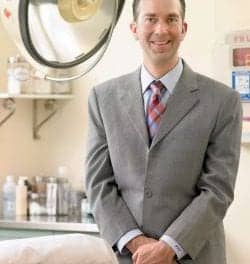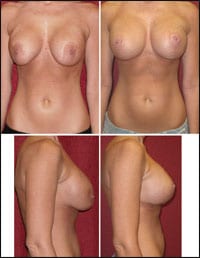Here are some “pearls” for introducing new technologies into your practice
If you are like most aesthetic physicians, every time you go to a meeting or conference, you come back to your office with an attaché case or shopping bag filled to capacity with brochures about new lasers, fillers, and skin-care lines.
With the constant flow of product launches into the market, it is an ongoing challenge to balance your medical integrity, professional ethics, and inherent skepticism with the natural desire to stay on top of trends. New technologies often enter the public domain before the manufacturers and end-users have had enough time to gain the clinical experience needed to determine efficacy, safety, duration, and the best applications. It’s a vicious cycle.
Today, products are launched directly to the consumer before they ever reach the clinician. Even though consumers do not always understand the laws of physics or the bioactivities of certain ingredients, they will be more interested in products that are marketed by companies that have a reputation for funding formal clinical trials under the guidance of respected institutions. This becomes even more important for smaller companies and start-ups who have not yet achieved widespread name recognition.
“New technologies come and go, so we tend to take a wait-and-see approach. In our practice, we are highly selective about bringing in new devices and products until we are convinced that they offer an added benefit. Patients appreciate it when you are honest about what can be achieved and don’t overpromise,” says Allen D. Rosen, MD, of The Plastic Sur-gery Group, Montclair, NJ.
Minimally Invasive Techniques Lead the Way
It has been well-documented that the real growth in this market is in minimally invasive techniques that offer patients the advantages of less downtime, fewer scars, and lower risk. The opportunities for expanding your menu of services lie in adding ancillary procedures that may enhance surgical results, and, for some patients, may be considered an alternative to surgical procedures.
This is not necessarily evidence that women and men are having less surgery; rather, they are having more nonsurgical procedures by comparison. The consumer’s appetite for these services is “off the charts.” The bread-and-butter prodcuts for aesthetic medicine are botulinum toxin Type A, dermal fillers, and resurfacing devices and agents.
As would be expected, there is a learning curve for every new procedure. Each dermal filler is injected in a unique way into a specific target tissue. It takes time to perfect your skills as an injector.
Every laser or light system works in a slightly different manner to achieve the desired results. There is no substitute for hands-on experience, training, and support. No patient wants to be the first person on whom you try out your new technique.
Science and Innovation
The buzz in the consumer’s mind is focused primarily on technological ad-vancements that marry science with innovation. These hot topics include novel uses for dermal fillers and botulinum toxin Type A; radio-frequency tissue-tightening devices; thread lifts for the brows, face, and neck; and laser and light therapies.
According to Gregory Ruff, MD, founder and chairman of Quill Medical Inc in Chapel Hill, NC, “Facial-rejuvenation techniques utilizing barbed sutures are a quantum leap in the spectrum of long-lasting, minimally invasive aesthetic procedures, and are a welcome addition to any cosmetic practice. It is also an ideal complementary technique when performed in combination with resurfacing, injectables, neck liposuction, and blepharoplasty.”
Get the Word Out

Even the best public-relations professional needs a continuous supply of creative ideas of how to pitch your story to the media—and ultimately to generate placements in media outlets that will reach the patients you want to attract.
Local television news programs are particularly keen to air a taping of a treatment performed using a high-tech system, especially if the results are visible on camera. You never know when a 4-minute segment on a local news channel will get picked up by a major network.
Communicate With Your Patients
Maintaining communication with your patient base sends the message that you are a professional organization that is expanding to meet their growing needs. Be aware that what works in Clearwater may not work so well in Cleveland. Every geographic region has its own characteristics.

Communicating with patients who may not have been back recently to top up on hyaluronic acid or botulinum toxin Type A may also be effective in certain markets. It also provides a mechanism to clean out your database and maintain it regularly.
One thing is certain: If your patients don’t hear from you, they will almost certainly be approached by your competitors—aggressively and often.
Judith Hellman, MD, a dermatologist in New York City, uses her informative practice Web site to maintain a connection with her patient base. “New York patients are very savvy, and they pride themselves on staying on top of the latest developments in cosmetic dermatology. They keep us on our toes. We have found that sending out bimonthly e-newsletters is a great way to keep our current patients up to date on new services and products we are offering.”
Emailed newsletters also encourage patients to ask questions about other procedures and techniques. Patients may also send content of interest to friends and acquaintances.
Patient Seminars

Always invite your guests to bring a friend to an event to bolster the attendance. If only one patient decides to have a procedure, your seminar will have paid for itself easily, and possibly many times over.
Best Practices
Integrating an Nd:YAG laser or a radio-frequency device into your practice requires time for preparation and planning. You cannot just expect to lease a $50,000 machine and have it sell itself overnight. If your patients are not made aware that you have added a service, they may assume that you simply do not offer it and may go elsewhere.
Don’t leave it up to your patients to ask you, because they often won’t. Successful practices today have systems in place to transition each new piece of equipment into the existing menu of services.
Most vendors will schedule on-site staff training to properly explain the technology to your entire office, not just to your medical staff. Every member of your team should understand everything they need to know about all of the services you offer, not just the ones in which they are directly involved. The more they know, the better they will be able to assist you and address patients’ questions about their individual concerns.
“The best way to integrate any new technique into your practice is by gaining experience and developing clinical photography to document your results—which is vital,” says Laurence Kirwan, MD, of Fairfield County Plastic Surgery, Norwalk, Conn. “Staff training is also a key element to success. Your nurses and patient coordinator need to be up to speed on the nuances of the procedure so they can speak with authority to prospective patients.”
So do your homework on the new technologies that you want to bring into your practice, educate and train your staff, inform your patients, and enhance your visibility to the public. These preparations will permit you to reap as much benefit as possible from your added services. PSP
Wendy Lewis is an international consultant, author of America’s Cosmetic Doctors (Castle Connolly), and editorial director for MDPublish.com, a medical-marketing and publishing group. She is a contributing writer for Plastic Surgery Products.



